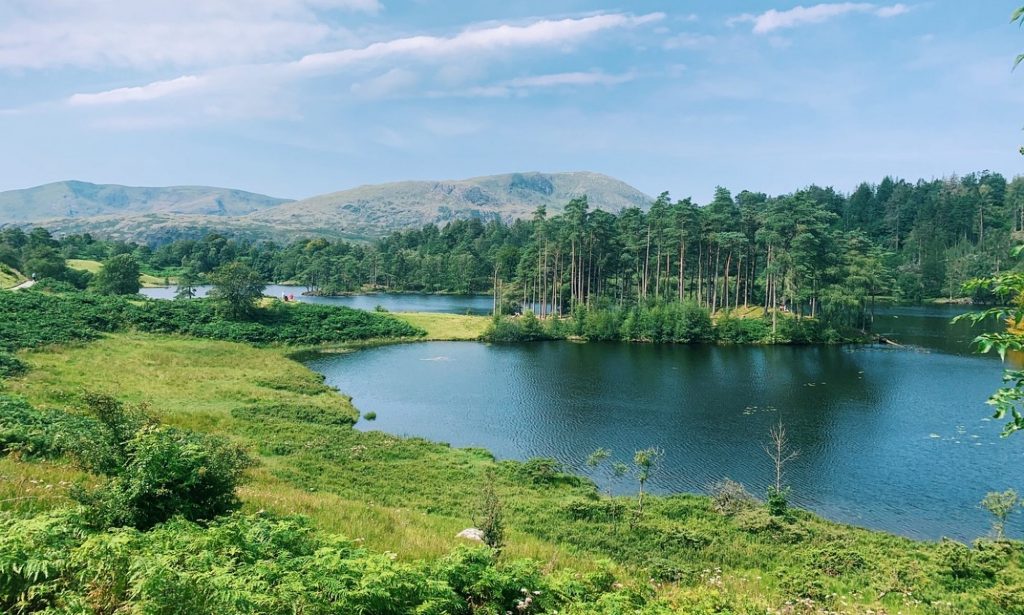Technobiophilia: nature and cyberspace, By Sue Thomas
Thomas coined the term technobiophilia, founded in her discovery that the utilisation of nature metaphors in internet culture was the result of biophilia (Thomas, 2013).
Technobiophilia – the innate attraction to life and lifelike processes as they appear in technology (Thomas, 2013).
Even through the crowds of technology facing the modern world, we are still drawn to nature and incorporating nature in the technological innovations in our lives. We even term technological developments after accepts of nature, such as storing data ‘in the cloud’ or your computer ‘getting a bug’ (Barreiros et al., 2018).
In the book Thomas (2013) states that technobiophilia practises and artefacts contribute to wellbeing via a tech-nature balance (Thomas, 2013). However, looking to critically analyse this finding, I wonder if utilising technology to connect with nature could produce the same benefits or even increased benefits, than incorporating natural design through standard Biophilic design such as planting, colour, textures, sounds etc. In summary, if we incorporate nature in technology, do we get the same wellbeing benefits from interacting with nature in this way or are the benefits slightly lowered or even heightened?
Relating This New Knowledge Into My Project
If technology does provide similar levels of benefits as more traditional or standard biophilic schemes, there is a large potential to utilise technology in my project. Technology could be utilised to develop a method of implementing nature into hospitality spaces in a fully immersive and easily changeable manner. For instance, natural scenes accompanied by their soundscapes and scents could be shown in restaurants instead of standard art work. Of course there is the cost element of this application to consider, as the technology needed may be expensive. However, if done on a rental basis of the technology in a trail to prove its efficacy and then if the concept proves value, an investment could be made by businesses into the needed technology.
This link of utilising technology in my project directly relates to key discussions had in my panel discussion with the biophilic experts. It was raised that technology is currently overlooked a lot in biophilic design, with designers falling into the trap of thinking that technology and nature need to be kept separate. Additionally, in the panel the vast importance of creating dynamic and changing spaces has on the success of continuously attracting customers to spaces, as many shames require refurbishment after a few years in order to modernise and keep customers engaged. Technology if successfully utilised in the way I am envisaging could create changeable, dynamic and evolving spaces that fully immerses customers in nature and consequently improving their wellbeing by re-connecting them with nature. Creating such spaces not only addresses the key points raised in my expert discussion, but also the needs of the hospitality professionals I have spoken to throughout the course of my project so far. I have learnt that hospitality spaces are generally receptive to including nature in their spaces, but they cannot afford large scale refurbishments nor can the afford to be closed for the time these refurbishments need to take place. Therefore, utilising technology which can be easily implemented into existing spaces or even utilise some of the existing technology they already have, such as speakers, could help to create an immersive natural experience in the space without obstructing the business and instead attract greater customers in.
Delving deeper in Thomas’s work around technobiopilia, it becomes apparent that she focuses on how technology could be utilised to enhance our experiences of nature or how nature can be brought more into our lives by technology via mobile tech such as smart phones, apps or wearables (Thomas, 2020). She wishes to develop a way of measuring the benefits to wellbeing that living a technobiophilic lifestyle can have. For example, an app or wearable tech that can measure heart rate changes based on different environments people are in (Thomas, 2020). Suggesting, my idea of developing immersive natural spaces may be a new and unusual take on her concept.
Reflections – the breakthrough moment
I feel that delving deeper into technobiophilia and looking at how to utilise technology in a beneficial way to connect people with nature has really been a breakthrough moment in my work. I believe trying to tackle re-connecting people to nature from this angle is so exciting and currently I can’t find it being done like this in any hospitality spaces which is such a groundbreaking thing for me. So far I have mainly been looking at new ways to combine design ideas that are partially out in the general field of biophilic design; but, this avenue feels new and even slightly liberating!
Next Steps:
I am looking to get in contact with Sue them stop discuss these concepts further over the coming week. I believe she was actually invited into class as a part of the guest speaker project so hopefully she will also be willing to assist in my work.
My big task over the coming weeks is to secure venues to begin testing my concepts in. I have a possible contact of a hospitality manager in Edinburgh, who seems keen but is yet to confirm if this keenness is more a reflection of their kindness. I also have contacts I have built through LinkedIn and Facebook groups that are hospitality managers, who I am reaching out to work with. However, last night I actually met a hospitality manager for the restaurant JOY at Notting Hill who seemed very interested in my work. I have been in contact with him today and I am hopeful something may come of that connection.
Bibliography
Barreiros, C., Veas, E. and Pammer, V., (2018) “Bringing nature into our lives.” In International Conference on Human-Computer Interaction (pp. 99-109). Springer, Cham.
Thomas, S., 2013. Technobiophilia: Nature and cyberspace. A&C Black.
Thomas, S. (2020) “Technobiophilic Design Challenges for Developers” https://suethomasnet.wordpress.com/whatistechnobiophilia/designchallenges/
